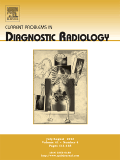
Current Problems in Diagnostic Radiology
Scope & Guideline
Driving Dialogue on Diagnostic Imaging Developments
Introduction
Aims and Scopes
- Diagnostic Imaging Techniques and Innovations:
The journal emphasizes advancements in diagnostic imaging modalities such as MRI, CT, and ultrasound, exploring their applications in various clinical scenarios and diseases. - Artificial Intelligence in Radiology:
A significant focus is placed on the use of AI technologies to enhance diagnostic accuracy, streamline workflows, and improve patient outcomes through innovative tools and algorithms. - Education and Training in Radiology:
The journal addresses the educational needs of radiology professionals, discussing new curricula, teaching methodologies, and the integration of technology in medical education. - Clinical Decision Support Systems:
Exploration of clinical decision-making tools, including structured reporting systems and AI-driven support, to enhance the quality and efficiency of radiological assessments. - Health Policy and Economics in Radiology:
Analysis of the economic aspects of radiology, including cost-effectiveness studies, reimbursement issues, and the impact of healthcare policies on imaging practices. - Diversity and Inclusion in Radiology:
The journal advocates for increased representation and support for underrepresented groups in radiology, focusing on gender disparities and minority representation.
Trending and Emerging
- Artificial Intelligence and Machine Learning:
There is a growing emphasis on AI and machine learning applications in diagnostic radiology, showcasing their potential to enhance diagnostic accuracy and improve workflow efficiency. - Telemedicine and Remote Consultations:
The rise of telemedicine, especially post-COVID-19, has led to an increase in research exploring remote consultations and virtual care in radiology. - Interdisciplinary Collaboration:
Emerging themes highlight the importance of collaboration between radiologists and other healthcare professionals, fostering a team-based approach to patient care. - Patient-Centered Radiology:
Increased focus on patient engagement and satisfaction in imaging services, reflecting a shift towards more patient-centered care models. - Diversity and Inclusion Initiatives:
A growing trend in addressing diversity within the radiology workforce, focusing on equity, representation, and support for underrepresented minorities. - Quality Improvement and Patient Safety:
Research is increasingly directed towards quality improvement initiatives and safety protocols in radiological practice, aiming to enhance patient outcomes and reduce errors.
Declining or Waning
- Traditional Imaging Techniques:
There has been a noticeable decrease in publications focused solely on traditional imaging techniques, as the field shifts towards more advanced and integrated approaches involving AI and multimodal imaging. - General Radiology Topics:
Papers covering broad or generalized topics in radiology are becoming less frequent, with a trend toward more specialized and niche areas of research. - Basic Educational Frameworks:
While education remains crucial, there is a decline in discussions centered on foundational educational frameworks, with a transition towards innovative and technology-driven teaching methods. - Single Modality Studies:
Research focused on single imaging modalities without integration into a broader clinical context is becoming less common, as multidisciplinary approaches gain traction. - Ethics in Radiology:
Although important, discussions specifically focused on ethical dilemmas in radiology have diminished, potentially overshadowed by more pressing issues such as policy and economic factors.
Similar Journals
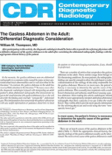
Contemporary Diagnostic Radiology
Unveiling New Horizons in Medical ImagingContemporary Diagnostic Radiology is a pivotal journal in the field of medical imaging and radiology, published by Lippincott Williams & Wilkins. With an ISSN of 0149-9009 and an E-ISSN of 1938-1395, this journal serves as an essential platform for disseminating high-quality research and advances in diagnostic radiology and related disciplines. While it is categorized in the lower quartiles (Q4) for its performance in the 2023 rankings in both Neurology, Radiology, Nuclear Medicine and Imaging, and Surgery, its focus on emerging technologies and methodologies in imaging continues to provide valuable insights for practitioners and researchers alike. The journal’s scope includes innovative diagnostic tools, imaging techniques, and case studies, fostering collaboration and knowledge sharing in the medical community. Although it does not offer open access options, its commitment to contributing to the ongoing dialogue in clinical imaging is undisputed, making it an essential resource for professionals seeking to stay abreast of current trends and research in the rapidly evolving landscape of diagnostic radiology.

AMERICAN JOURNAL OF ROENTGENOLOGY
Inspiring Progress in Nuclear Medicine and Imaging.AMERICAN JOURNAL OF ROENTGENOLOGY (AJR), published by the American Roentgen Ray Society, stands as a beacon of excellence in the fields of Radiology, Nuclear Medicine, and Imaging. With an impressive impact factor positioning it in the Q1 category of both Medicine (Miscellaneous) and Radiology as of 2023, AJR is ranked 13th out of 333 journals in its category, reflecting its prominent presence and high relevance in advancing medical imaging knowledge and practice. Established in 1973 and continuing through to 2024, the journal encompasses a broad spectrum of research, critical reviews, and innovative techniques, making it a vital resource for researchers, healthcare professionals, and students alike. Although it does not currently offer open access options, AJR ensures that its rigorous, peer-reviewed content remains accessible to a global audience committed to the evolution of radiological science. With its home base in Leesburg, Virginia, AJR not only informs but also inspires advancements in radiology, enhancing diagnostic practices and patient care globally.
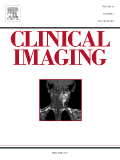
Clinical Imaging
Shaping Tomorrow's Imaging Techniques TodayClinical Imaging, published by Elsevier Science Inc, is a renowned journal dedicated to the field of radiology, nuclear medicine, and imaging. With an ISSN of 0899-7071 and an E-ISSN of 1873-4499, this esteemed publication has established its significance in advancing imaging science since its inception in 1989 and continues to make impactful contributions to the discipline through 2024. The journal holds a prestigious Q2 ranking in the category of Radiology, Nuclear Medicine, and Imaging, reflecting its critical role in bridging research and clinical practice. Currently ranked #113 out of 333 by Scopus, with a notable 66th percentile, it offers a platform for disseminating high-quality research, reviews, and case studies that inspire innovation and enhance imaging techniques. Although it primarily functions as a subscription-based journal, it remains dedicated to accessibility and the dissemination of pivotal findings that inform both academia and clinical settings. Clinical Imaging is essential for researchers, professionals, and students alike, offering insights that shape the future of diagnostic imaging.

Diagnostic and Interventional Radiology
Unlocking the Future of Radiology Through Open AccessDiagnostic and Interventional Radiology, published by the Turkish Society of Radiology, is a renowned open-access journal dedicated to advancing the fields of radiology, nuclear medicine, and imaging. With its transition to open access in 2022, the journal aims to foster knowledge dissemination and accessibility for researchers, healthcare professionals, and students alike. This esteemed publication, indexed in Scopus, features a robust editorial board and peer-reviewed articles that contribute significantly to the body of work in cardiology, radiology, and related disciplines. The journal currently holds a significant position, reflected in its Category Quartiles ranking—Q2 in Radiology, Nuclear Medicine, and Imaging, and Q3 in Cardiology and Cardiovascular Medicine, highlighting its relevance and impact in these critical medical fields. Research published in this journal is vital for evolving diagnostic and interventional techniques, clearly situating it as a key resource for those seeking to stay at the forefront of radiological science.

West African Journal of Radiology
Enriching Practices: Your Source for Cutting-Edge Radiology ResearchWest African Journal of Radiology is a prominent platform dedicated to the dissemination of innovative research and advancements within the field of radiology, particularly in the West African context. Published by Wolters Kluwer Medknow Publications, this journal plays a crucial role in enhancing radiological practices and education across the region, contributing to improved healthcare outcomes. Although the journal operates under a subscription model, it is committed to fostering knowledge exchange among researchers, professionals, and students alike. With its focus on original research, case studies, and reviews, the West African Journal of Radiology serves as an invaluable resource for those looking to stay abreast of the latest trends and developments in radiological science. As the field evolves, this journal aims to bridge the gap between research and clinical application, making it essential reading for those involved in radiological practices.

Radiologie
Elevating Clinical Practice with Radiological InsightsRadiologie, published by SPRINGER HEIDELBERG, is an emerging journal dedicated to the fields of radiology, nuclear medicine, and imaging. With an ISSN of 2731-7048 and E-ISSN 2731-7056, this journal does not currently offer open access, providing a traditional yet respected platform for scholarly communication. Founded in 2022, it aims to advance the understanding of cutting-edge imaging techniques and their applications in clinical practice, contributing to improvements in diagnostic accuracy and patient care. Despite its recent establishment, Radiologie is positioned within the Q4 quartile category, reflecting its developing presence in the academic landscape, with a current Scopus rank of #231 out of 333 in its category. The journal serves as a vital resource for researchers, professionals, and students seeking to stay abreast of the latest developments in radiological science, imaging technology, and their clinical implications, ensuring ongoing engagement and advancement in this critical area of healthcare.

Emergency Radiology
Enhancing Urgent Care with Cutting-Edge Radiological StudiesEmergency Radiology, published by SPRINGER HEIDELBERG, is a leading journal in the fields of emergency medicine and radiology, dedicated to advancing the understanding and application of diagnostic imaging in urgent medical conditions. Established in 1994, this journal has consistently contributed to the discourse around emergency diagnostics, maintaining a strong position within the academic community, as evidenced by its Q2 rankings in both Emergency Medicine and Radiology, Nuclear Medicine and Imaging categories as of 2023. With a distinguished focus on innovative research and case studies, it serves a diverse audience of researchers, clinicians, and healthcare professionals who seek to enhance their knowledge and improve patient outcomes in emergency settings. While the journal is not currently open access, it offers robust subscription options and continues to be an integral resource for those at the forefront of emergency care. With an ISSN of 1070-3004 and an E-ISSN of 1438-1435, Emergency Radiology is positioned to remain a key player in shaping the future of medical imaging through its commitment to high-quality research and evidence-based practices.
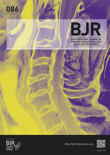
BRITISH JOURNAL OF RADIOLOGY
Shaping the Future of Imaging through Rigorous ResearchBritish Journal of Radiology is a leading peer-reviewed journal published by the British Institute of Radiology, dedicated to advancing the field of radiology, nuclear medicine, and imaging. With a prestigious history dating back to 1945, this journal is at the forefront of disseminating cutting-edge research and innovations that significantly impact clinical practice. Currently enjoying a Q1 ranking in the field of radiology and Q2 in general medicine for 2023, it is recognized for its rigorous standards and high-quality content, ranking #87 out of 333 in Scopus for specialties related to Medicine, Radiology, Nuclear Medicine, and Imaging, placing it in the 74th percentile. Researchers, professionals, and students are encouraged to engage with the latest findings and comprehensive reviews presented within its pages, which contribute not only to academic discourse but also to the evolution of practice in the wider medical community.
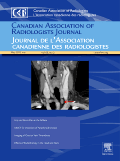
CANADIAN ASSOCIATION OF RADIOLOGISTS JOURNAL-JOURNAL DE L ASSOCIATION CANADIENNE DES RADIOLOGISTES
Empowering Practitioners: Bridging Research and Clinical PracticeCanadian Association of Radiologists Journal - Journal de l'Association Canadienne des Radiologistes, published by SAGE Publications Inc, stands as a vital resource in the realms of Radiology and Medicine. With an ISSN of 0846-5371 and an E-ISSN of 1488-2361, this esteemed journal offers insightful research articles and reviews that contribute to the advancement and practice of radiology, benefiting both seasoned professionals and emerging scholars. Holding a commendable Q2 ranking in both the fields of Medicine (miscellaneous) and Radiology, Nuclear Medicine and Imaging, the journal is recognized for its impactful publications, positioning its content within the top 40% of global research outputs. Since its inception in 1973 and continuing through to 2024, it has consistently provided a platform for cutting-edge research and clinical innovations, facilitating knowledge transfer among practitioners and educators. The journal’s significant influence is evidenced by its Scopus rank of #67 out of 333 in its category, placing it in the 80th percentile of academic excellence. Although it does not offer open access, its contributions are critical for advancing the field, making it essential reading for all those invested in the evolution of radiological sciences.

SEMINARS IN ROENTGENOLOGY
Elevating Knowledge in Radiologic PracticesSEMINARS IN ROENTGENOLOGY is a revered journal dedicated to the dynamic fields of Radiology, Nuclear Medicine, and Imaging, published by W B SAUNDERS CO-ELSEVIER INC. With a legacy spanning from 1966 to 2024, this journal provides a platform for comprehensive review articles that foster scholarly discussion and advancement in diagnostic imaging techniques and methodologies. Although currently not an open access publication, SEMINARS IN ROENTGENOLOGY holds significant relevance within its field, reflected by its inclusion in the Q4 category in the latest 2023 Journal Rankings and its position in the 20th percentile among its peers. This journal appeals widely to researchers, professionals, and students aiming to enhance their knowledge and contribute to the evolving landscape of radiologic science. Notable for its informative content and expert insights, SEMINARS IN ROENTGENOLOGY continues to serve as an essential resource for those committed to advancing clinical practice and research in radiology.